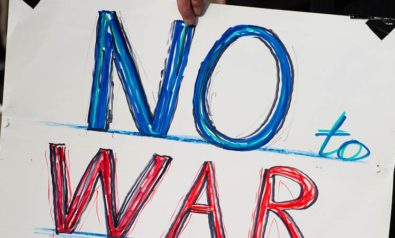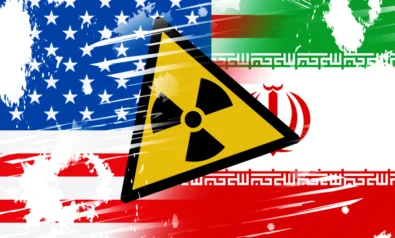After last week’s tanker attacks in the Gulf of Oman, Tehran will need to undertake a sober assessment of its options, which are few, and its prospects, which only get worse.
Last week’s attacks on two oil tankers outside the Strait of Hormuz show that for now Tehran is choosing from a very limited playbook in responding to America’s increasingly painful sanctions on the Islamic Republic. If indeed Islamic Revolutionary Guard Corps naval forces are responsible for these recent attacks as well as those on four tankers last month, then Tehran’s reasoning seems clear. Attacks on tankers exiting the Gulf will lead to speculation about the future dependability of Gulf-sourced oil, responsible for nearly one-third of the global oil supply. Such thoughts are hardly comforting to markets, inevitably leading to higher prices. That’s what Tehran wants.
Iran can’t be the only one to suffer the consequences of Washington’s sanctions. The rest of the world, including those who don’t necessarily source their oil imports from the Gulf, must also pay a price for Washington’s actions. Predictably, markets reacted to both attacks with prices spiking in the immediate aftermath. But perhaps because armed conflict is seen as unlikely for the time being — both President Donald Trump and Supreme Leader Ayatollah Ali Khamenei have said they do not want war — prices have fallen back to nearly pre-attacks levels.
The stronger trend in oil markets is lower demand as a result of slowing economies. That could change if real conflict follows, and we confront another “Tanker War” as was the case during the Iran-Iraq War of 1980-1988, when Iraq attacked an Iranian oil facility in 1984, sparking an all-out second front to the one raging on their common border. Tankers carrying both countries’ oil became each other’s prime targets, with the West, including the US, the UK and the USSR, flagging and escorting tankers in an attempt to discourage both sides — especially Iran — from going after tankers protected by nations with substantial navies capable of striking back.
Prices spiked back then as well, but then also fell as markets adjusted. So, history and current circumstances suggest that Tehran’s strategy will likely have little lasting impact, especially given the limited number of attacks.
Maybe a Blockade?
Tehran could move to blockade the Strait of Hormuz as it did during the Iran-Iraq conflict. But that too had little lasting impact in oil markets. More importantly, it led to confrontation between the US and Iran, including an Iranian rocket attack on a US Navy ship and an accidental downing by a US naval vessel of an Iranian commercial airliner that killed all 270 passengers aboard. The Iranians would be well advised to heed history and avoid such provocations this time. Under President Trump, who is influenced by war hawks like Secretary of State Michael Pompeo and National Security Adviser John Bolton, the US response would not be proportional.
The Tanker War is additionally instructive of the uncertain escalatory nature of tit-for-tat actions between the two feuding countries. As was with the case of the Iranian airliner, the escalatory ladder is unpredictable and very unstable. Anticipating an enemy’s response is dangerously inexact, especially when factoring in public emotions.
So, if Iran wants to trigger higher oil prices, it has few options other than continuing its current strategy of occasional tanker attacks that temporarily rile markets. Even targeting more tankers — unless it’s on a massive scale that is beyond its capability short of declaring all-out war on Gulf tanker traffic — will probably have little medium-to-long-term impact. Moreover, such an all-out tanker war strategy would expose Tehran to worldwide condemnation and loss of whatever public high ground it may have after Washington’s abandonment of the Iran nuclear deal, the Joint Comprehensive Plan of Action (JCPOA), in May 2018.
There is one other potentially deniable tactic — employing its proxy forces like Hezbollah, the Houthis in Yemen or Iraqi Shia militias to go after American or allied targets. Such attacks, like the one on Monday against the Saudi airport in Abha in the Western part of the kingdom, also carry high risk. The potential killing of large numbers of civilians, and especially of an American, would almost demand a prompt and forceful response from Washington or a US ally. Furthermore, such proxies cannot always be relied upon to do precisely what Iran may direct. The kind of control necessary to contain the risky set of consequences is lost.
Finally, Iran can resume its nuclear weapons program as it has already threatened. While that might lose it the support of the remaining signers of the JCPOA, it might also give Tehran more sway in getting Washington to back off and consider rejoining the nuclear agreement, albeit under different criteria. Under Trump, the Americans seem impervious, however, to the pleadings of even their closest allies. Even they would be reluctant to go to the US administration without some concrete incentives to get them back into the JCPOA.
The Road Not Taken
Despite the apparent futility of its playlist, Tehran has achieved some modest success. Donald Trump has stated he doesn’t want war with Iran, does not seek regime change and wants to talk with the Iranians. These options may appear meager, but collectively could be used by Iran’s leadership to signal to the Iranian public that its strategy has worked and it is now ready to begin talks with the Americans. That would be the smart approach, and Americans, Iranians and the rest of the world would breathe a great sigh of relief.
The perfect opportunity for that occurred last week when Japanese Prime Minister Shinzo Abe visited Tehran and met with the supreme leader to seek some lessening of tensions between the two sides. Khamenei indicated he wasn’t interested in talking to Washington, however.
Tehran will need to undertake a sober assessment of its options, which are few, and its prospects, which only get worse. It can never hope to match Washington’s abundant arsenal of economic and military options to make life in Iran and political leadership in Tehran ever more difficult and fraught. Iranians certainly have an extraordinary capacity for enduring suffering, as they amply demonstrated during the devastating Iran-Iraq War and 40 years of onerous American sanctions before 2015. But does the supreme leader really want to impose that on his people and subject his leadership to inescapable criticism?
In fact, if Khamenei wants to end this and allow his richly endowed nation to benefit from the global economy, then the decision seems clear. Sit down with Washington and negotiate. So why can’t he? The answer lies simply in the course those negotiations are likely to take. The US agrees to lift all sanctions and perhaps make some commitment not to attempt to remove the regime. There are no ideological or existential reasons preventing Washington from doing its part.
But Tehran would have to agree to release Americans it currently unjustly holds; to severely curtail its medium-range missile testing; extend the time horizons for development of its nuclear program, doubtlessly surrendering the possibility of having a nuclear weapons capability for the foreseeable future; and cease all support for Iran-allied terrorist organizations to include Hezbollah, et al. For Tehran and the Islamic Republic, these are obstacles that extend far beyond the political or even military considerations. They are existential in that to forever foreswear nuclear weapons and support for its proxies is tantamount to a repudiation of the Islamic Revolution. Indeed, options are few and prospects are grim in Iran.
The views expressed in this article are the author’s own and do not necessarily reflect Fair Observer’s editorial policy.
Support Fair Observer
We rely on your support for our independence, diversity and quality.
For more than 10 years, Fair Observer has been free, fair and independent. No billionaire owns us, no advertisers control us. We are a reader-supported nonprofit. Unlike many other publications, we keep our content free for readers regardless of where they live or whether they can afford to pay. We have no paywalls and no ads.
In the post-truth era of fake news, echo chambers and filter bubbles, we publish a plurality of perspectives from around the world. Anyone can publish with us, but everyone goes through a rigorous editorial process. So, you get fact-checked, well-reasoned content instead of noise.
We publish 2,500+ voices from 90+ countries. We also conduct education and training programs
on subjects ranging from digital media and journalism to writing and critical thinking. This
doesn’t come cheap. Servers, editors, trainers and web developers cost
money.
Please consider supporting us on a regular basis as a recurring donor or a
sustaining member.
Will you support FO’s journalism?
We rely on your support for our independence, diversity and quality.















